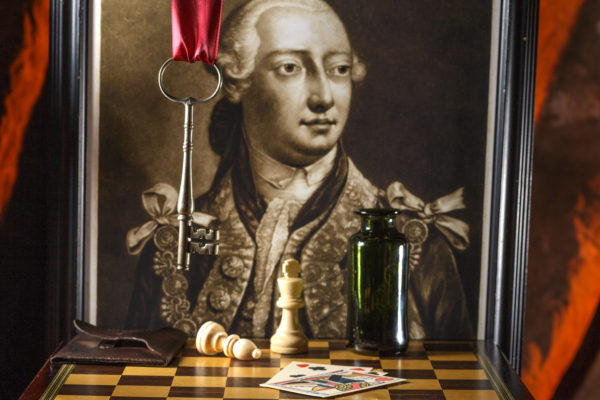
In May 2015, after ten years with Colonial Williamsburg, I was finally enjoying a long overdue vacation. Little did I know what was brewing back in the office. Upon my return, I had a new project assignment—and a high-priority one at that. The order from my supervisor? “Make it happen.”
The task? Launch a locked-room game.
In more detail: draw young adults to Colonial Williamsburg’s Historic Area by launching a unique twist on the mostly-urban phenomenon of live-action locked-room games.
Whaaa…?
In other words, create the program we now call “Escape the King.”
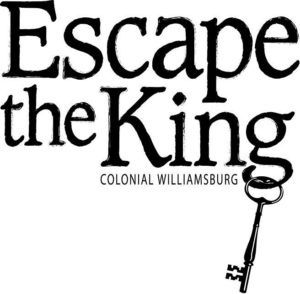
Where to start? We found a few games in Richmond; Washington, D.C.; Chicago; and New York—all places we could get to easily or to which staff members already had trips planned. We played, and took notes. We discussed what Colonial Williamsburg could offer that these other businesses couldn’t. We also had some notes that had been kicked around the previous fall… and we had a cross-Foundation team of great colleagues.
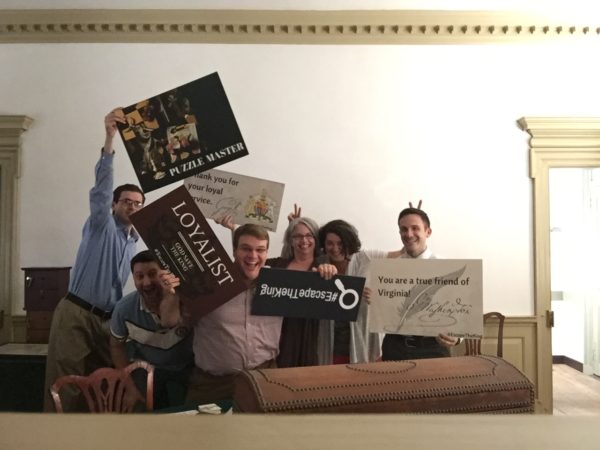
The Puzzle Team on setup day. L to R, Mark Fluehr, Chris Tedeschi, Nathan Ryalls, Abigail Schumann, yours truly, and Joe Beatty.
The Puzzle Team was pretty brilliant at coming up with puzzles to keep 10-12 adults busy for the better part of an hour. These people (including several notably overworked and ultimately heroic team members) identified objects to make the game tactile and three-dimensional, and as accurate to the 18th century as possible—subject to the necessity of having a fun 21st-century game.

Don’t even try to mess with Mark Fluehr! He’ll turn your brain into a pretzel, just by thinking at you.
Some challenges were similar to those faced by any new program—finding a location and working around existing scheduling for the space, and ensuring that our curators were comfortable with the uses to which the room and the furniture would be put. But some challenges needed unique solutions. For example, evening programs require at least some light. Usually this means cressets (if outdoors), wall sconces with candles, floor candelabras, or lanterns—all using open flame, all controlled by staff members, and all subject to strict safety rules. For a musical performance or play, candlelight is elegant and provides wonderful ambience. But for a room in which guests are moving around, touching objects, reading documents, and potentially moving furniture, it wasn’t safe to have open flames or candelabras. Even tin lanterns with glass, though it would keep curious fingers away from candles, were unsafe: the lanterns could easily fall or be knocked over, and the glass could shatter.

See? No. No, you can’t see. The lighting is much better now. This was an early experiment.
We tried to keep the lighting looking 18th-century without flames, but testing brought numerous complaints that guests couldn’t see to solve the puzzles. We tried a number of ideas before finding a solution that provides sufficient light and satisfies our guests but is… shall we say… unorthodox from a historical-accuracy viewpoint. Still—not one guest complaint since! In this case, satisfying game play = successful program.
In just 45 crazy hectic business days—nine weeks—from the date of our first team meeting, the “show” opened. I had the honor of ushering a group of employees—including Foundation president Mitchell Reiss and his wife, Elisabeth—into the first of several employee preview performances.

That same week, the program opened to non-employee guests. Almost immediately, reservations filled up for a month. Obviously the demand for hands-on activities is there, and our team created something that helps satisfy it.
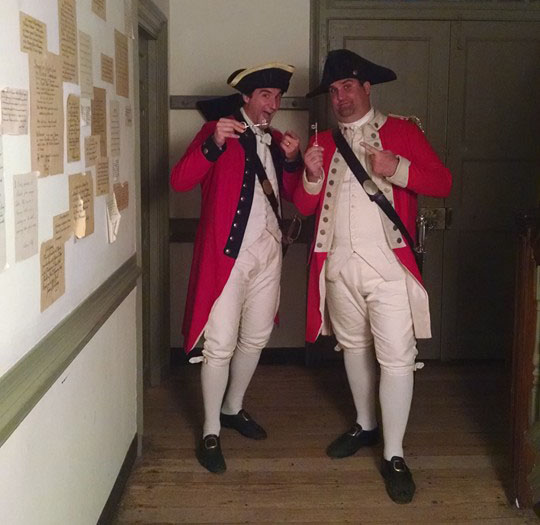
In real life, British officers are never this excited about keys. (Left, Dave Catanese; right, Jay Knowlton)
“Escape the King” ran on selected dates from August through December before going on hiatus, along with all other programming, in January. It opened again, in two rooms, on April 1, 2016, and is still one of the most sought-after tickets in the nightlife of the Revolutionary City.
The original plan, I was told, was that a “development team” would hand off the program, props, script, and all materials to an “operations team” in the Historic Area, capitalizing on the professional talents of different staff groups. What became increasingly clear to all of us during the development and launch was that these two hands must work together continually, not just as one team handing the project off to another one. The result is a successful and exciting program for guests, but also a new and exciting collaboration with colleagues across the Foundation.
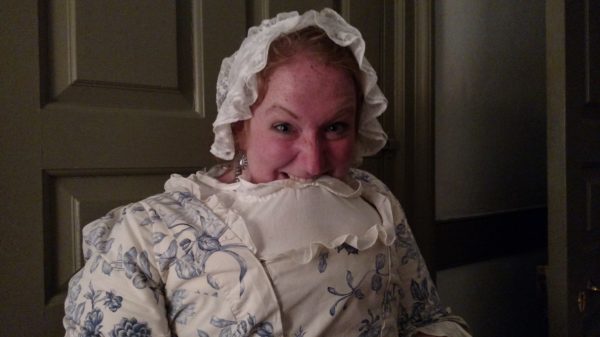
Corinne Dame plays a British officer’s wife. Here, she’s chomping at the bit for her husband to deal with the next batch of suspected American rebels.
Because of my work leading the development and launch, I was offered the opportunity to join the operations team as a manager. It’s work, but it’s fun. New cast members as well as new managers came on board this spring.
We have no intention of resting on our laurels: “Escape the King” is still being tweaked, experimented with, and subjected to increased interactivity and heightened dramatic tension, in a constant quest for continued guest satisfaction.

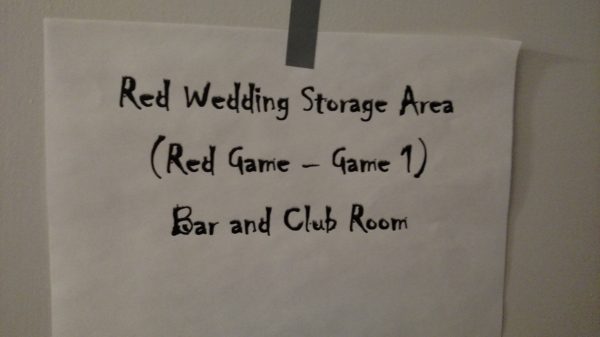
How we keep the materials straight for each of the two puzzle rooms, which allow for staggered start times.
It isn’t official, but I have high hopes for developing more exciting programs. The days are long—eight hours at our “day jobs” and up to four more in the evening—but I don’t want to escape “Escape.” It’s too much fun.
“Escape the King” runs Thursday, Friday and Saturday evenings with start times beginning at 6:30 p.m. Space is limited, but tickets can be purchased at any Colonial Williamsburg ticketing location, by phone, or online.
GUEST BLOGGER: Gina DeAngelis
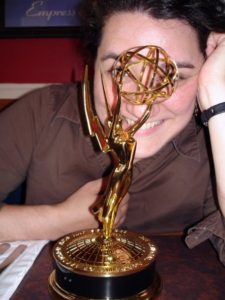 Gina DeAngelis made it her career to make history fun. She was (and in some cases still is) a freelancer, editor, playwright, screenwriter, teaching and research assistant, photographer, actor, actor/combatant, director, and stage manager.
Gina DeAngelis made it her career to make history fun. She was (and in some cases still is) a freelancer, editor, playwright, screenwriter, teaching and research assistant, photographer, actor, actor/combatant, director, and stage manager.
She’s won awards for screenwriting, playwriting, media writing, and—once—was the toast of Hummelstown, Pennsylvania for being Wendy’s Employee of the Month.
We’ll be in CW in October to celebrate our 25th wedding anniversary (25 years and we’re still speaking!). We may be geezers but this sounds like so much fun!
I commend Gina on her many accomplishments; square-burger folks everywhere must share in your pride. Now about that actor/combatant…hmm…..
Congratulations on your upcoming anniversary! I hope you have a fantastic trip! Do book your tickets early because this program has limited space. We’re sprucing it up a bit and hope you enjoy it!
I still eat at Wendy’s, and I think that says something! (I’m not sure what though…)
P.S. “actor/combatant” just means an actor who can do stage combat choreography. It belatedly occurred to me that it sounds like a needlessly lofty term for reenactor, but it isn’t. I was certified in rapier/dagger, quarterstaff, and unarmed, but never did get to learn smallsword or broadsword. I suppose there’s still time!
The expression is “chomping at the bit”
Indeed, Marsha! We apologize for our typo. We appreciate you so kindly bringing it to our attention. It’s been fixed!